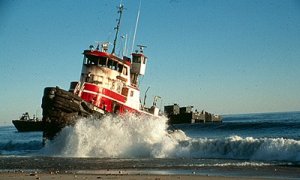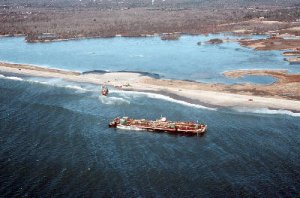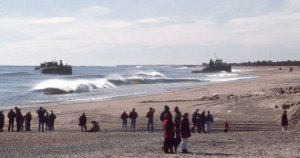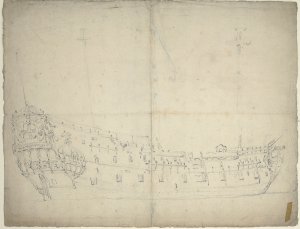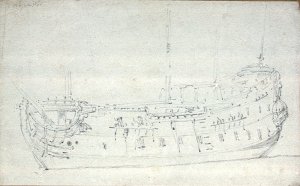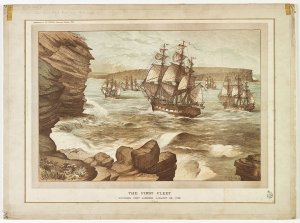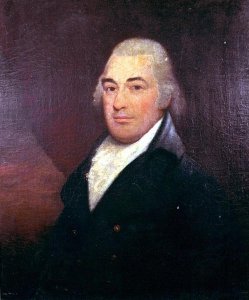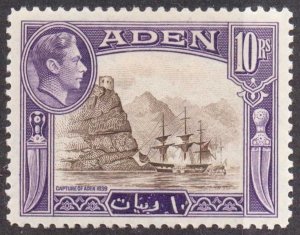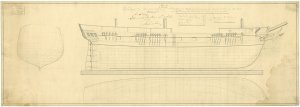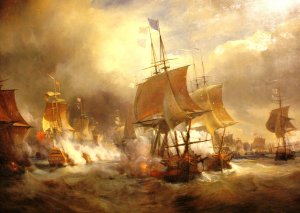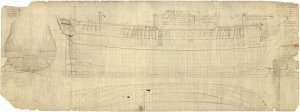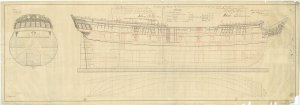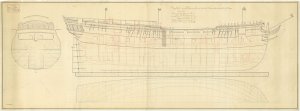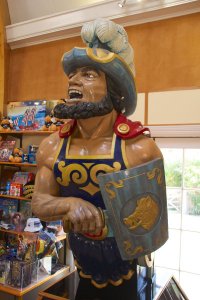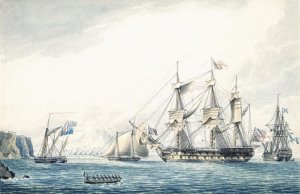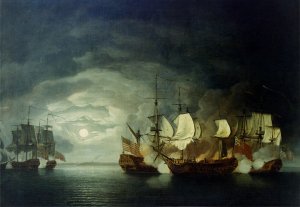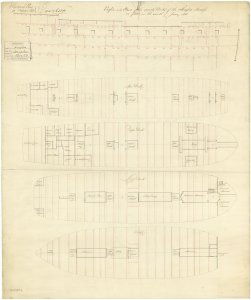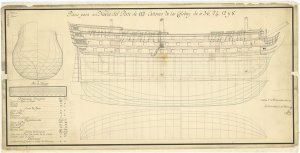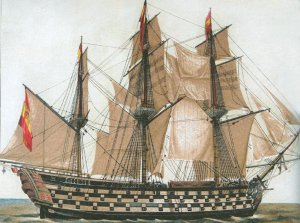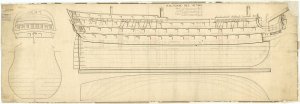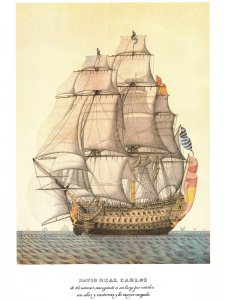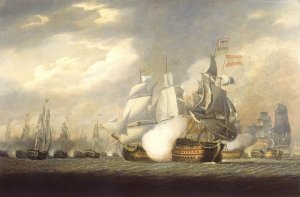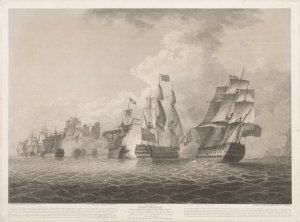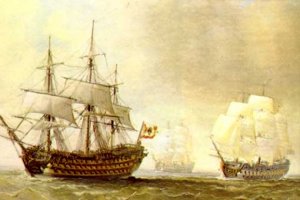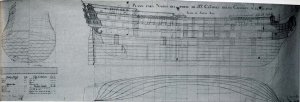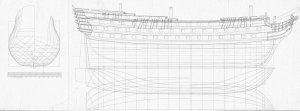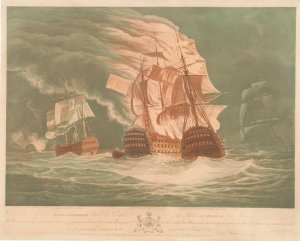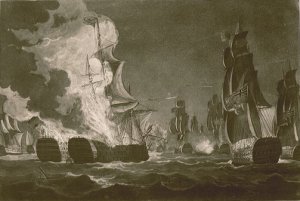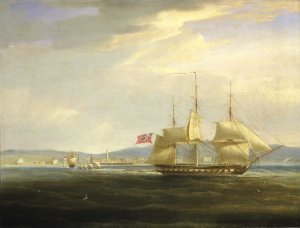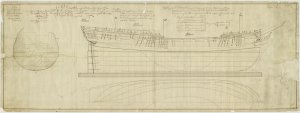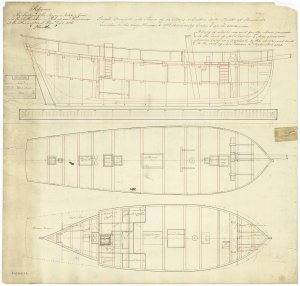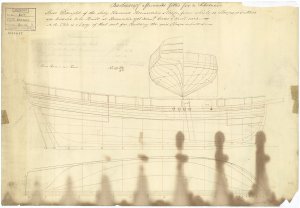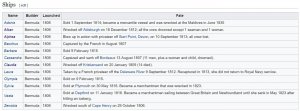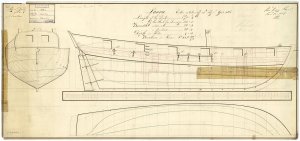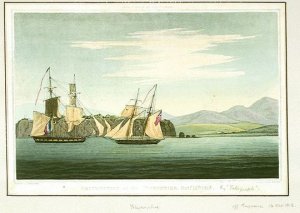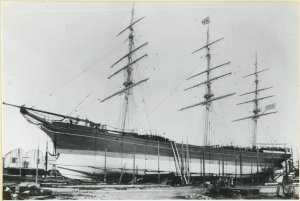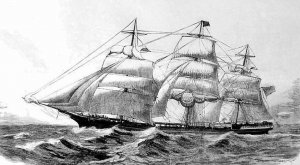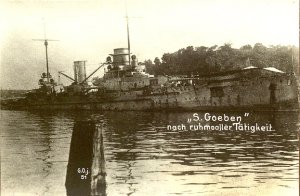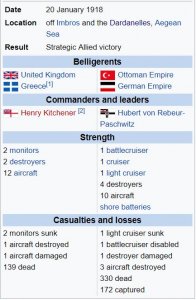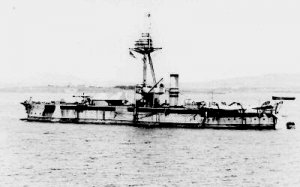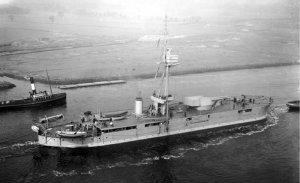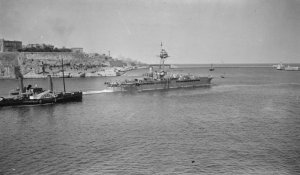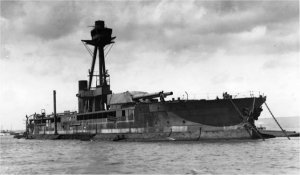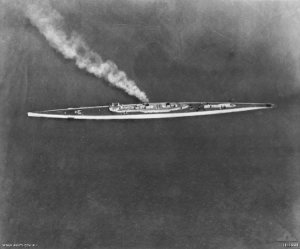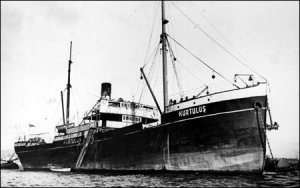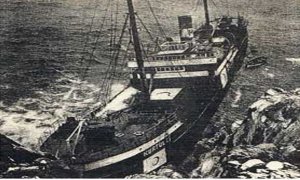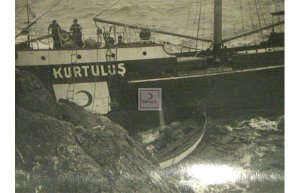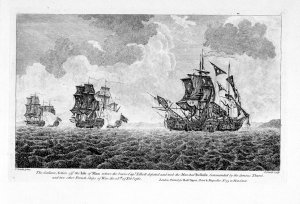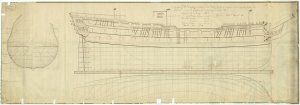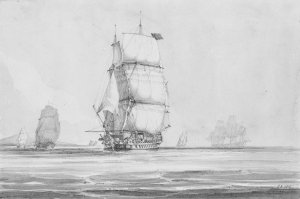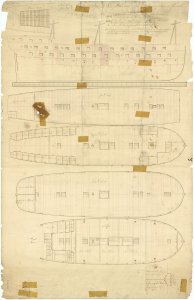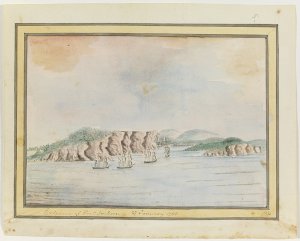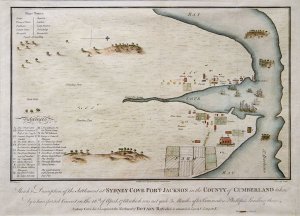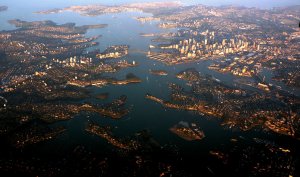Today in Naval History - Naval / Maritime Events in History
19 January 1943 - The Battle off Zuwarah was a World War II naval battle which took place on the night of 19 January 1943 in Libyan waters between British and Italian forces.
The Battle off Zuwarah was a World War II naval battle which took place on the night of 19 January 1943 in Libyan waters between British and Italian forces. The battle ended with the complete destruction of an Italian flotilla of small minesweepers and auxiliary vessels evacuating Tripoli.
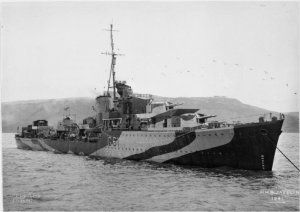
HMS Javelin
Background
The British Royal Naval destroyers HMS Kelvin and HMS Javelin were patrolling the area off Zuwarah, Libya. Part of a task force, their mission was to cut off the escape route of the last Italian ships fleeing from Tripoli, which would be conquered by Allied troops on 23 January 1943. Kelvin and HMS Nubian had forced the Italian torpedo boat Perseo to retire damaged and then sunk the 4,537 ton D'Annunzio, a merchant ship fleeing from Tripoli, on 15 January 1943.
On the night of 19/20 January 1943 Javelin's Type 271 radar detected a number of ships heading directly towards the Tunisian coast, coming from Tripoli. It was the Tripoli minesweeping flotilla, which had been ordered to leave the city and evacuate to Tunisia and then to Italy to avoid capture. The flotilla, under the command of Lieutenant Giuseppe Di Bartolo, was made up of four small minesweeping tugs (RD 31, RD 36, RD 37 and RD 39, of which RD 36 and 37 were crewed with Italian Guardia di Finanzapersonnel); the trawler Scorfano (the largest ship in the convoy); the small tanker Irma; the auxiliary minesweepers DM 12 Guglielmo Marconi (a requisitioned brigantine); R 26 Angelo Musco and R 224 Cinzia (two former fishing vessels); the auxiliary patrol vessel V 66 Astrea (a motor sailing vessel); and the pump boat S. Barbara (towed by the Scorfano).
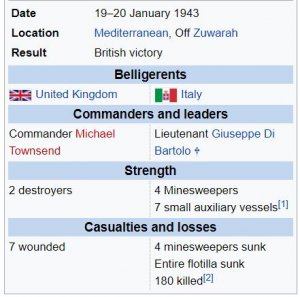
Battle
Javelin and Kelvin moved to an area of interception and sent star shells into the air, illuminating the lead ships. Realizing this was a group of Italian vessels (mistaken for a convoy), the British opened fire and the battle commenced. The Italians, under heavy fire, were able neither to fight back effectively (the RD minesweepers being armed with a 76 mm gun and two 6,5 mm each, while the other ships were only equipped with machine guns) nor to escape (having lower speed than the destroyers). RD 36, the flagship of the flotilla leader, tried to fight back to help the retreat of the other ships, but was soon sunk with all hands (the ship and her crew were awarded the Gold Medal of Military Valour for the action against overwhelming odds). The other vessels, fleeing towards the coast in the attempt to allow their crews to escape, were pursued, picked up one by one and destroyed. RD 37 and Scorfano were sunk with no survivors; Marconi was set afire but allowed all of her crew to escape before to sink, and the Irma was finished off with a torpedo.
By the morning of 20 January, the flotilla had been completely annihilated. Kelvin had expended 300 rounds of her 4.7 inch guns and Javelin 500 rounds. Javelin and Kelvin quickly retreated to Malta, where they arrived safely the next day. 180 men were killed on the Italian side, while the survivors either swam to the shore or were picked up by Italian vessels the next day.
https://en.wikipedia.org/wiki/Battle_off_Zuwarah
19 January 1943 - The Battle off Zuwarah was a World War II naval battle which took place on the night of 19 January 1943 in Libyan waters between British and Italian forces.
The Battle off Zuwarah was a World War II naval battle which took place on the night of 19 January 1943 in Libyan waters between British and Italian forces. The battle ended with the complete destruction of an Italian flotilla of small minesweepers and auxiliary vessels evacuating Tripoli.

HMS Javelin
Background
The British Royal Naval destroyers HMS Kelvin and HMS Javelin were patrolling the area off Zuwarah, Libya. Part of a task force, their mission was to cut off the escape route of the last Italian ships fleeing from Tripoli, which would be conquered by Allied troops on 23 January 1943. Kelvin and HMS Nubian had forced the Italian torpedo boat Perseo to retire damaged and then sunk the 4,537 ton D'Annunzio, a merchant ship fleeing from Tripoli, on 15 January 1943.
On the night of 19/20 January 1943 Javelin's Type 271 radar detected a number of ships heading directly towards the Tunisian coast, coming from Tripoli. It was the Tripoli minesweeping flotilla, which had been ordered to leave the city and evacuate to Tunisia and then to Italy to avoid capture. The flotilla, under the command of Lieutenant Giuseppe Di Bartolo, was made up of four small minesweeping tugs (RD 31, RD 36, RD 37 and RD 39, of which RD 36 and 37 were crewed with Italian Guardia di Finanzapersonnel); the trawler Scorfano (the largest ship in the convoy); the small tanker Irma; the auxiliary minesweepers DM 12 Guglielmo Marconi (a requisitioned brigantine); R 26 Angelo Musco and R 224 Cinzia (two former fishing vessels); the auxiliary patrol vessel V 66 Astrea (a motor sailing vessel); and the pump boat S. Barbara (towed by the Scorfano).

Battle
Javelin and Kelvin moved to an area of interception and sent star shells into the air, illuminating the lead ships. Realizing this was a group of Italian vessels (mistaken for a convoy), the British opened fire and the battle commenced. The Italians, under heavy fire, were able neither to fight back effectively (the RD minesweepers being armed with a 76 mm gun and two 6,5 mm each, while the other ships were only equipped with machine guns) nor to escape (having lower speed than the destroyers). RD 36, the flagship of the flotilla leader, tried to fight back to help the retreat of the other ships, but was soon sunk with all hands (the ship and her crew were awarded the Gold Medal of Military Valour for the action against overwhelming odds). The other vessels, fleeing towards the coast in the attempt to allow their crews to escape, were pursued, picked up one by one and destroyed. RD 37 and Scorfano were sunk with no survivors; Marconi was set afire but allowed all of her crew to escape before to sink, and the Irma was finished off with a torpedo.
By the morning of 20 January, the flotilla had been completely annihilated. Kelvin had expended 300 rounds of her 4.7 inch guns and Javelin 500 rounds. Javelin and Kelvin quickly retreated to Malta, where they arrived safely the next day. 180 men were killed on the Italian side, while the survivors either swam to the shore or were picked up by Italian vessels the next day.
https://en.wikipedia.org/wiki/Battle_off_Zuwarah




